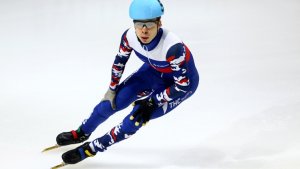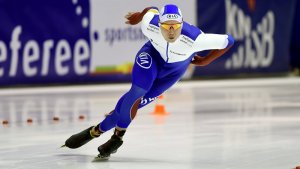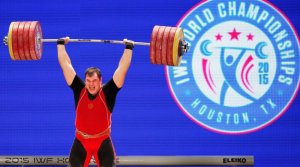http://roidvisor.com/maria-sharapova-meldonium-scandal-wadas-politically-motivated-targeting-russian-athletes/

Maria Sharapova, the world’s highest-paid female athlete, may be the highest profile athlete to test positive for the recently-banned performance-enhancing drug (PED) known as meldonium (Mildronate) but she is only one of at least seven top Russian athletes who were targeted by WADA.

The recent meldonium scandal witnessed failed tests for three national, world and/or Olympic champions including two of the world’s top speed skaters – Semion Elistratov and Pavel Kulizhnikov – and one of the world’s top Olympic weightlifters – Alexei Lovchev.
The 25-year old Elistratov was the 1500-meter gold medalist at the 2015 World Short Track Speed Skating Championships in Russia and the 5000-meter relay gold medalist at the 2014 Winter Olympics in Sochi.

The 21-year old Kulizhnikov was the 500-meter sprint gold medalist at both the 2015 and 2016 World Sprint Speed Skating Championships. He was also the first male speed skater to win both the 500-meter and 1000-meter sprint events at the 2016 World Single Distance Championships. Kulizhnikov holds the current world record in both the 500-meter and 1000-meter events.

Alexei Lovchev set two world records at the 2015 World Weightlifting Championships in Houston in November 2015. He won the gold medal in the snatch, clean and jerk and total. His 264-kilogram (582-pound) clean and jerk was a new world record while his 475-kilogram (1,047-pound) total tied the existing world record. He will likely be stripped of the gold medals after his B-sample came back positive for the growth hormone releasing peptide known as ipamorelin on March 8, 2016. The implications of the meldonium positive on his suspension are unclear.
In addition, national volleyball team player Alexander Markin, professional cyclist Eduard Vorganov and Olympic ice dancing gold medalist Ekaterina Bobrova were busted using meldonium.
Russian Sports Minister Vitaly Mutko acknowledged that there would be even more cases of Russian athletes using meldonium to be announced in the near future.
“It’s not my position to make public announcements, but there will be more cases,” Mutko said.
WADA has sought to make an example out of Russia ever since the German state news station ARD broadcast the documentary titled “Secret Doping Dossier: How Russia Produces Its Winners” in December 2014. Thanks to intelligence received as part of this investigation, WADA likely learned of the widespread use of meldonium by Russian athletes.
WADA’s targeting of meldonium is a further example of its politically-motivated and coordinated effort to further tarnish Russian sports. Towards this end, WADA quickly added meldonium to its 2015 Monitoring Program. This meant that WADA would secretly test athletes for meldonium. WADA based its decision to ban meldonium on data from at least three sources.
First, the Partnership for Clean Competition tested 8,300 random and supposedly anonymous urine tests in 2015 and found meldonium in 182 samples. Secondly, the third ARD documentary on Russia doping, “Secret Doping Dossier: Russian’s Red Herrings” referenced to an unnamed 2015 study in which 17% of Russian athletes (724 of 4,316) had metabolites of meldonium in their urine samples. And finally, a study titled “Meldonium use by athletes at the Baku 2015 European Games” accepted for future publication by the British Journal of Sports Medicine revealed that 66 of the total 762 (8.7%) of athletes in 15 of the 21 sports during the Games tested positive for meldonium.
The meldonium data from the 2015 Monitoring Program may have allowed WADA to target Russian athletes who were known to use meldonium. Once meldonium became “illegal” on January 1, 2016, WADA was counting on the likelihood than many meldonium users would not immediately discontinue the use of the drug.
WADA has failed miserably to detect doping in sports. It has only been able to detect less than 1% of athletes who dope while estimates of PED use range from conservative estimates of 10% to estimates over 50%. However, WADA hopes its strategy of singling out specific individuals (e.g. Lance Armstrong) and specific countries (e.g. Russia) will convince the general public that it is doing a good job at countering doping in sports. Nothing could be further from the truth.
Lance Armstrong recently explained the strategy used against him by a national anti-doping organization (USADA) that represents WADA. The very same could be said for WADA’s strategy of using Russia as a scapegoat for doping.

“I don’t know what the number is, whether it’s 10 or 20 or 50%, I don’t know. That tells you that that system is broken, too. It’s probably the reason that Travis and USADA needed something. They needed a case, they needed a story. I was that story, I was that case, it is what it is, and we’re here. But they needed something to show that they were effective. And they did, and it worked.”
Don’t be fooled. Doping is not limited to a few bad actors in sports. Don’t allow WADA to use Lance Armstrong or Russia as a scapegoat. WADA is fighting a losing battle. Doping is rampant and will continue to be rampant among all athletes in all sportsin all countries.
Комментариев нет:
Отправить комментарий